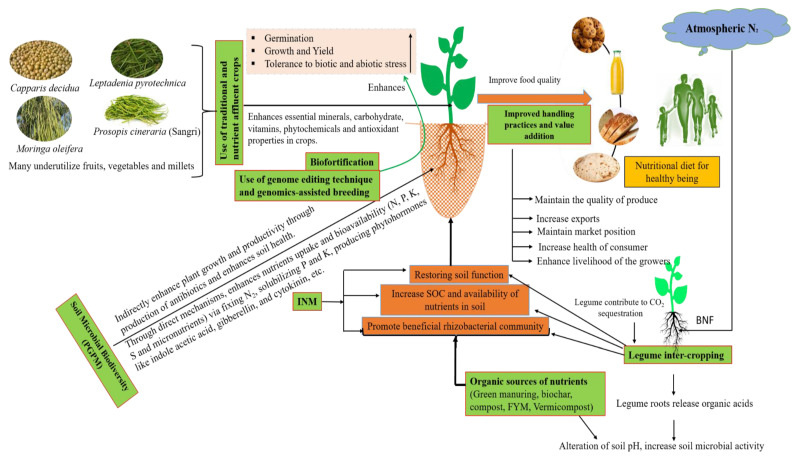Figure 3.
Conceptual overview illustrating the role of various aspects, such as the use biofortified crops, soil microbial biodiversity (PGPM), organic farming, integrated nutrient management, reviving traditional foods, using improved handling practices and value addition, the use of the genome-editing technique and genomics-assisted breeding, restoring soil function, etc., can enhance the nutritional density of crops. Through the various approaches, i.e., transgenic, conventional breeding, and agronomical approaches, the use of the genome-editing technique and genomics-assisted breeding enhances the nutritional quality of food crops. Soil microbial biodiversity increases the bioavailability of nutrients through direct and indirect mechanisms, which improve plant vitality and resilience to biotic and abiotic stress and, ultimately, lead to better nutrient uptake; legumes and INM alter the pH of the rhizospheric soil, which hastens the activity of microorganisms and, thus, regulates the nutrient-cycling process. Increased SOC; total N, P, and K; and organic sources of nutrients (green manuring, biochar, compost, FYM, and vermicompost) increase soil microbial activity and enhance the bioavailability of nutrients and soil health. The use of traditional and nutrient-rich crops enhances essential minerals, carbohydrate, vitamins, phytochemicals, and antioxidant properties in crops; improved handling practices and value addition maintain the quality of produce and increase the health of consumers.

